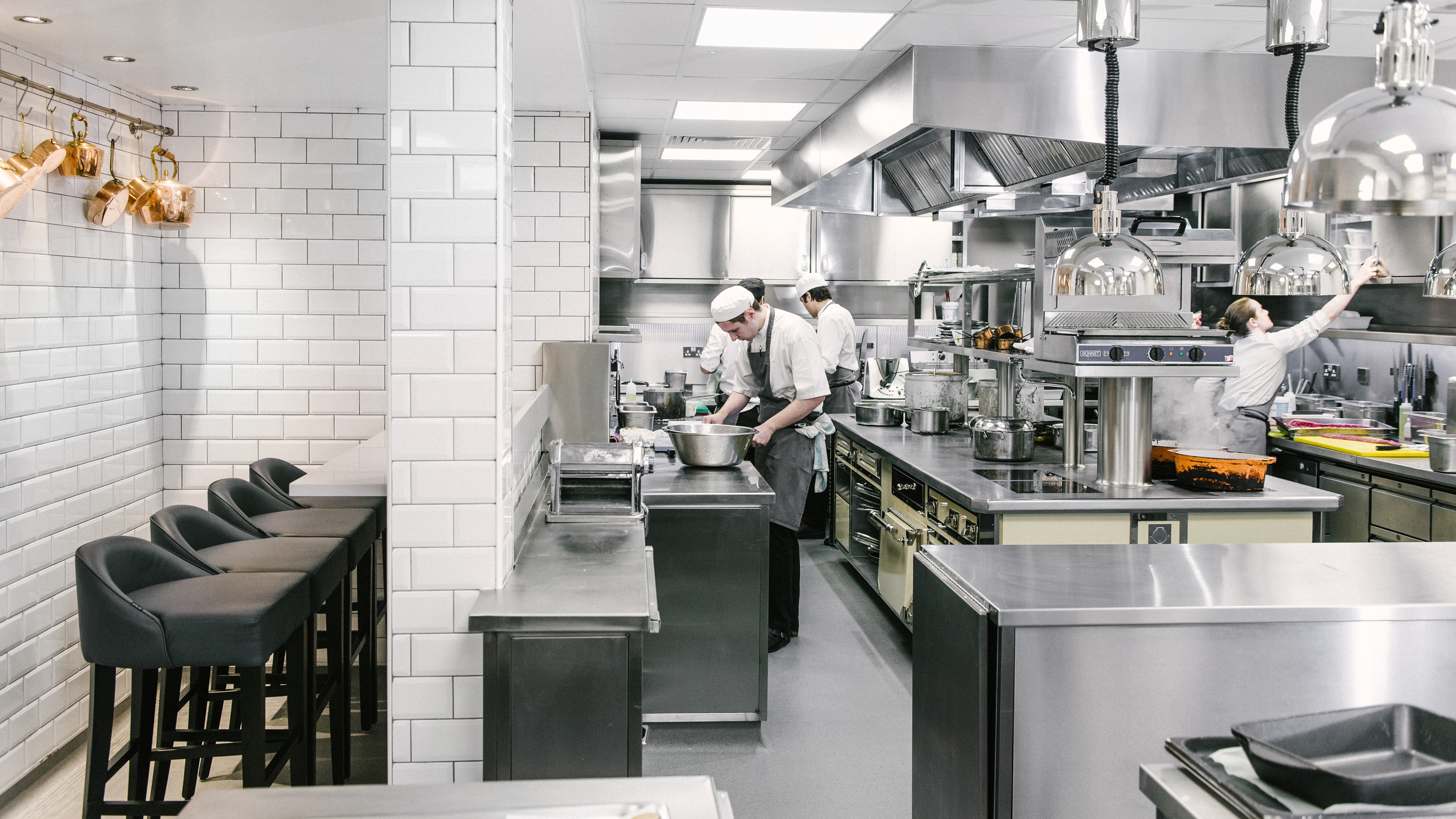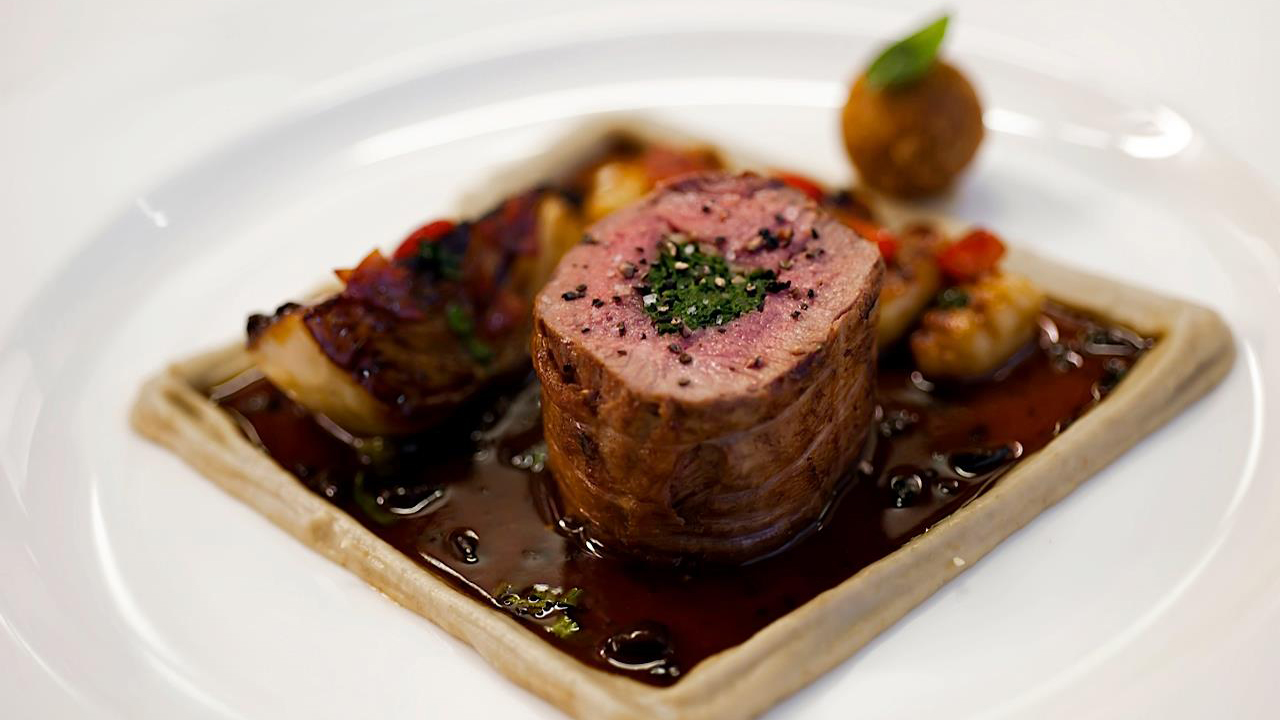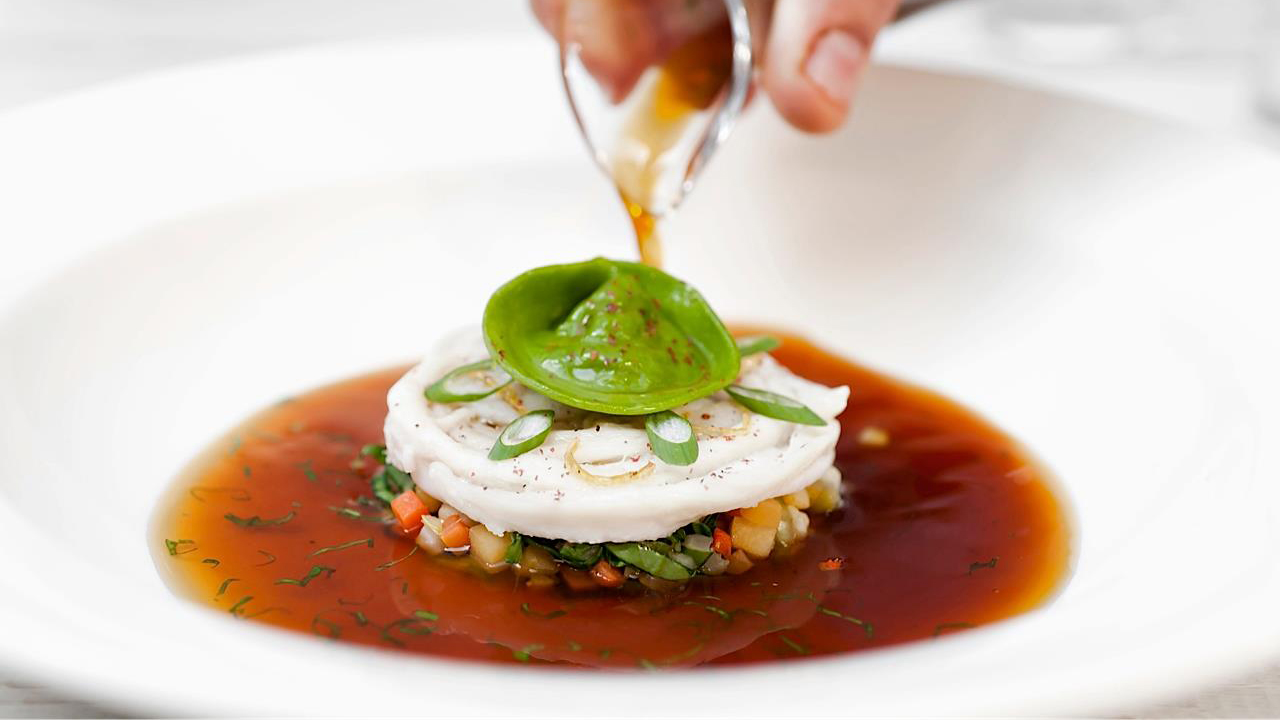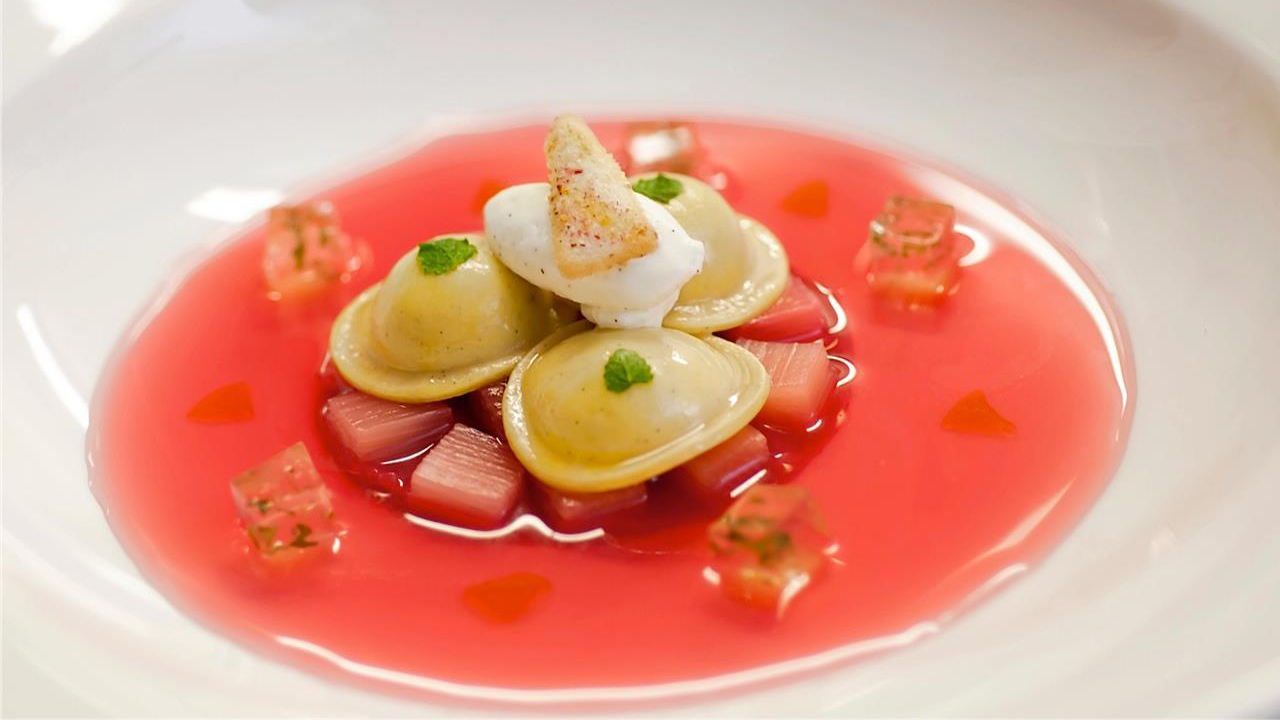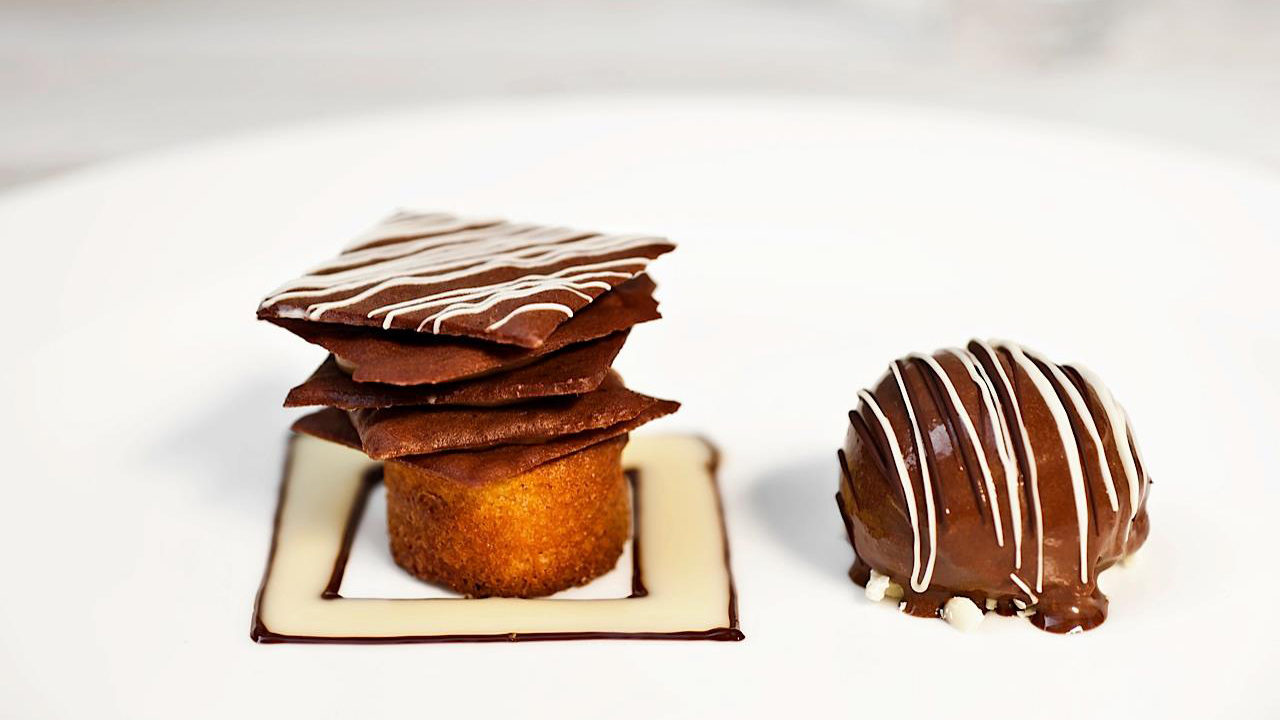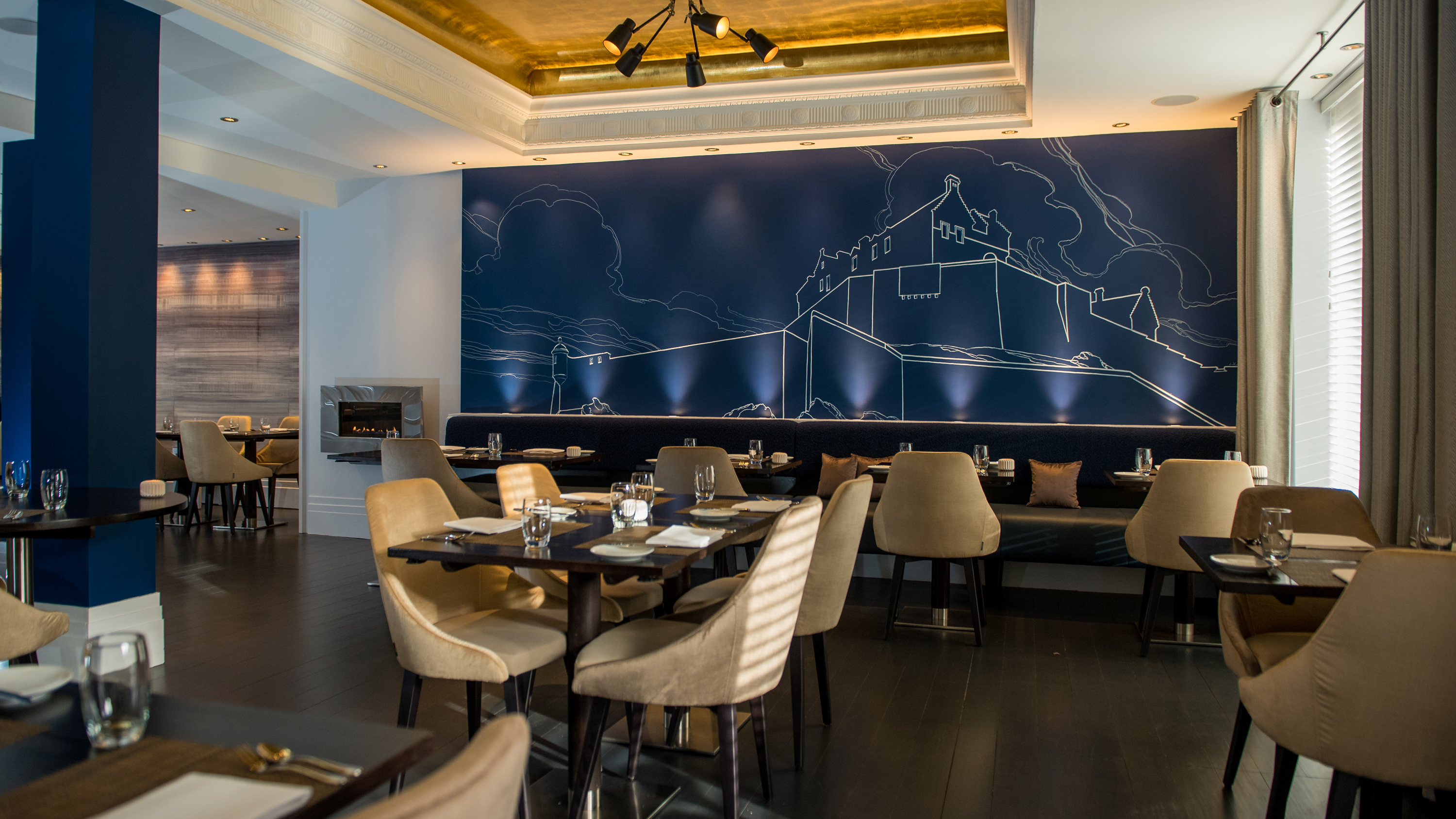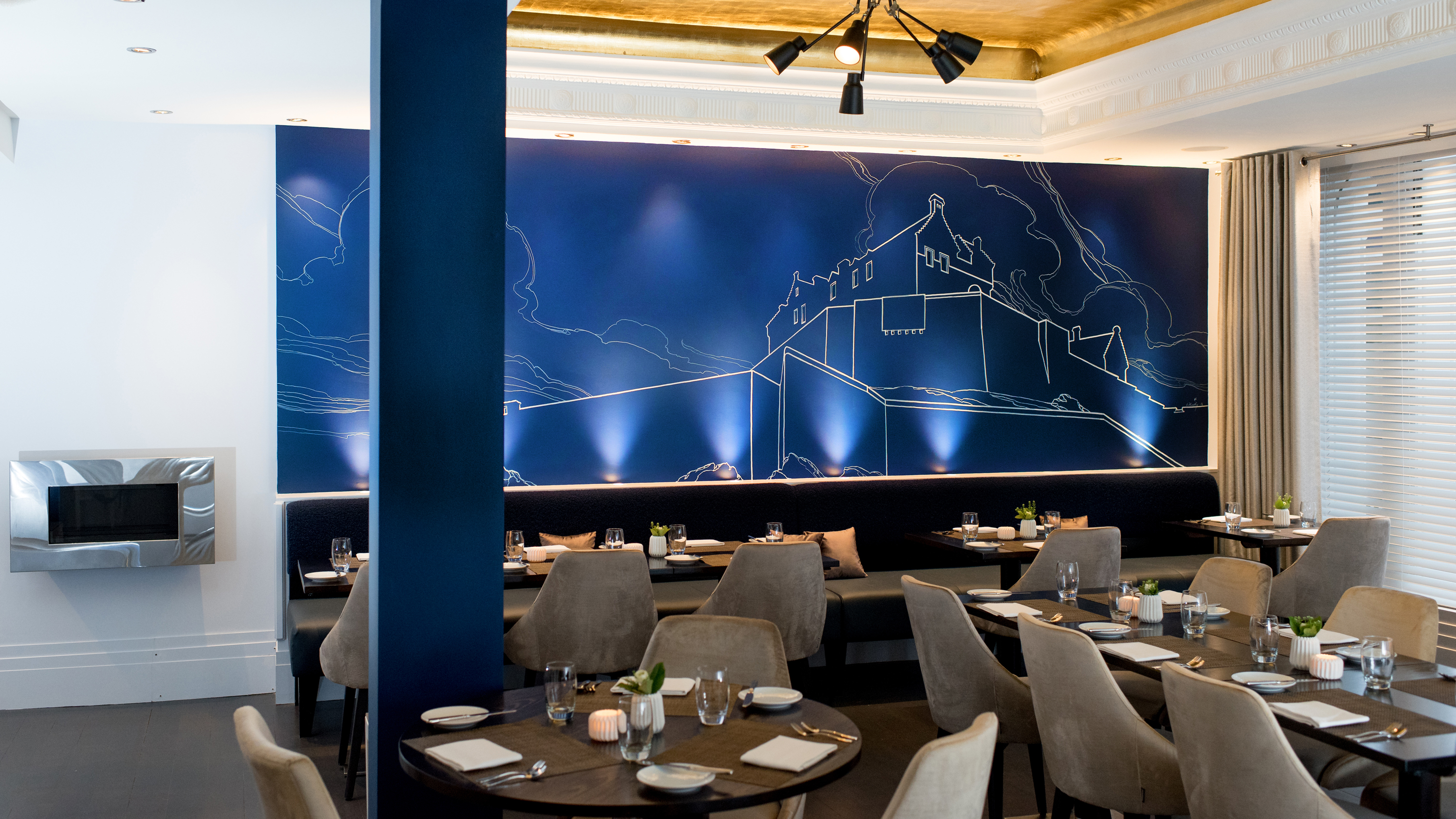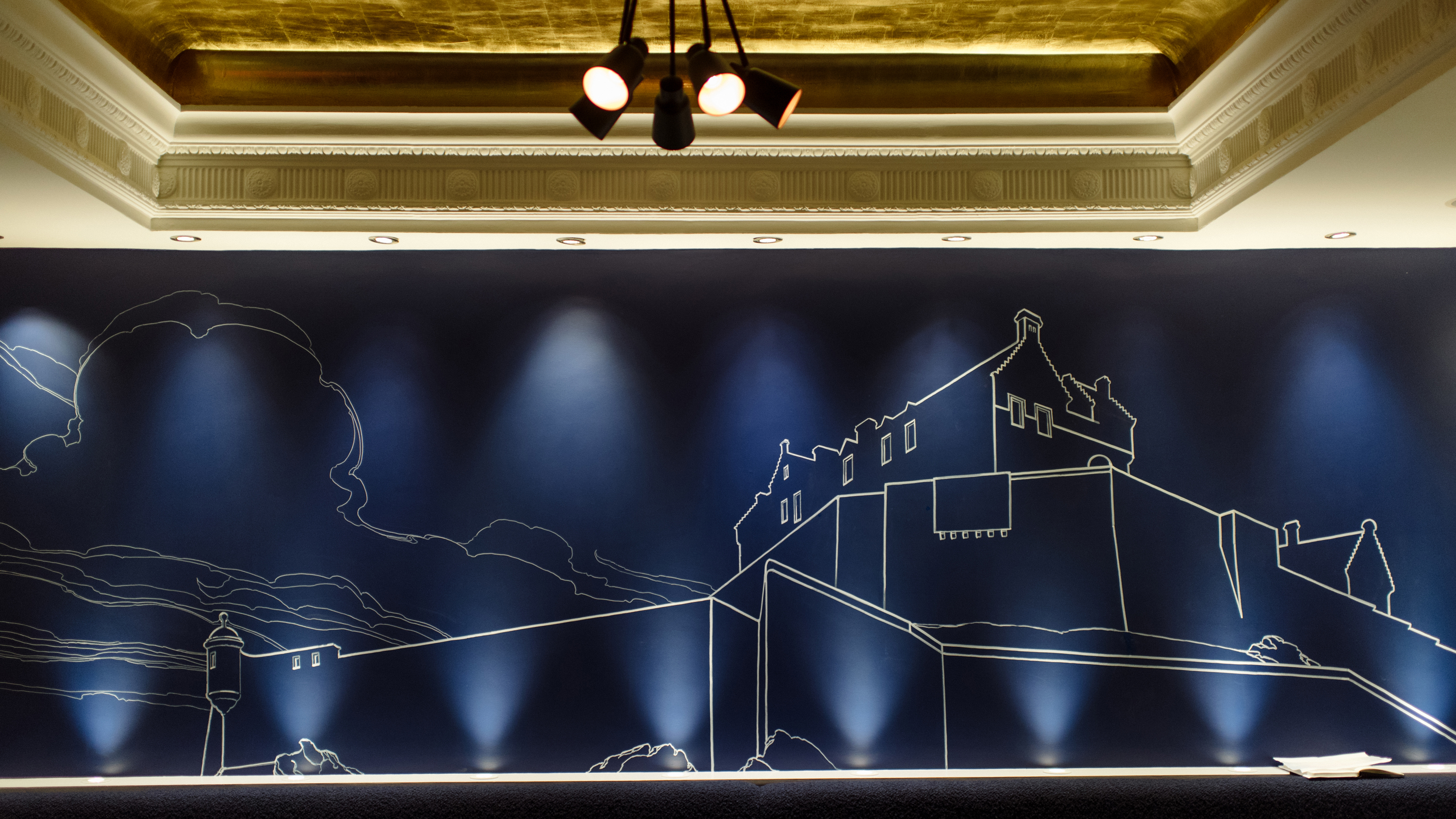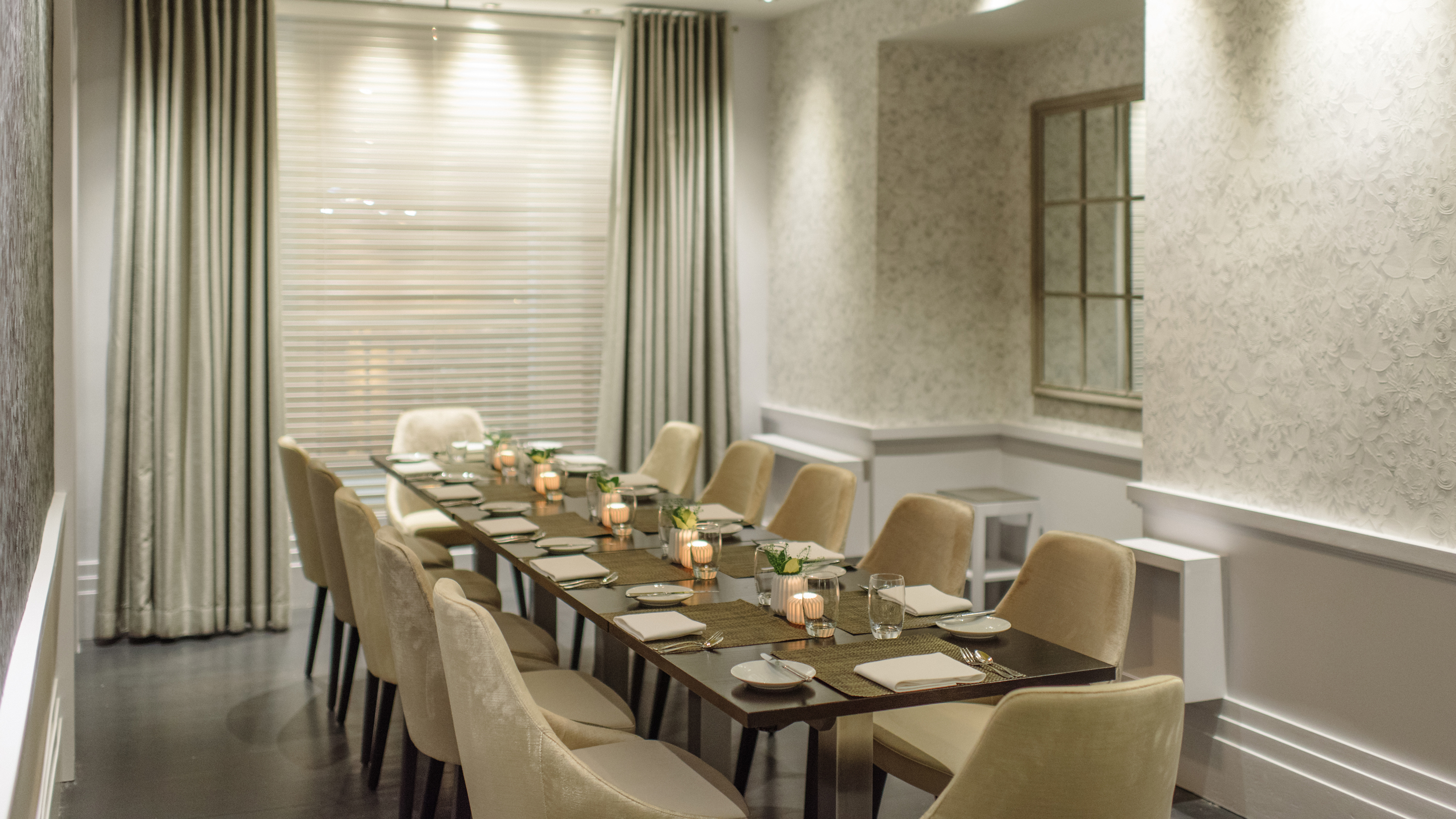Editor’s Note: Last November we had the pleasure of spending 10 captivating days in Scotland. Below is but one adventure of many from our stay. We hope the joy we experienced comes through in all our posts and missives from our adventure, which no doubt read better with a wee dram in hand.
Since at least the Bronze Age, people have been hanging out at the site of Edinburgh Castle in Scotland. The fortified castle perched on the hill offered strategic advantage, political prowess, inspiration to J. K. Rowling, and perhaps most deliciously, the namesake for one of Scotland’s best restaurants: Castle Terrace.
At Castle Terrace, we have the same commitment to using the best ingredients and fresh flavors on our menu and I’m constantly developing my menus according to the Scottish seasons.
Helmed by Edinburgh born-and-bred Dominic Jack, Castle Terrace embraces the city’s ancient beauty while still infusing the menu and atmosphere with modernity. Chef Jack artfully combines his years of French culinary training in Michelin-starred restaurants with Scotland’s abundance of incredible fresh, seasonal ingredients. The menu takes the Nature to Plate concept to new heights.
Chef Jack was kind enough to chat with us about Castle Terrace: the food, the drinks, and the design.
How did you meld French and Scottish culinary traditions?
At Castle Terrace, our menus showcase outstanding quality Scottish ingredients, cooked simply, using French techniques, but with a modern twist, offering new interpretations of dishes inspired by tradition.
Training in some of the finest French Michelin-star restaurants and learning from world-renowned chefs gave me a strong foundation and a real understanding of produce and how to get the very best from every ingredient. At Castle Terrace, we have the same commitment to using the best ingredients and fresh flavors on our menu and I’m constantly developing my menus according to the Scottish seasons.
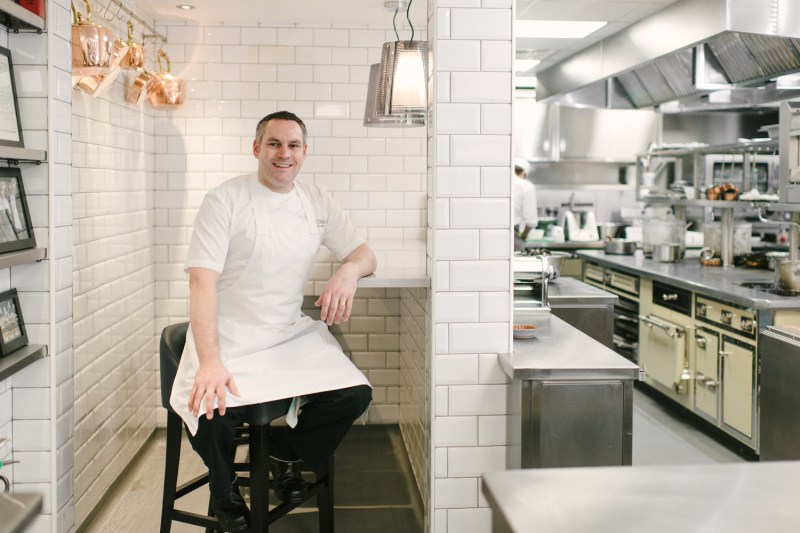
Is there something– an ingredient, an aesthetic, a cooking method, etc.– you’d like to see become more common in Scottish fine dining? Are there lessons others can learn from Scottish culinary traditions?
Traditionally, Scottish cooking was inspired by the natural larder, the produce and the ingredients people found around them – fish from our Scottish waters, Perthshire berries, and Scottish root vegetables. At Castle Terrace we live and breathe our From Nature to Plate philosophy – the freshest seasonal produce is sourced locally and delivered straight from land and shore, to the restaurant daily, and served to guests the very same day.
A lot my inspiration comes from the ingredients and produce. From the shellfish I get from Edinburgh’s Newhaven harbour, to the meat and game from Bower’s Butcher in the Stockbridge area of Edinburgh, I am constantly inspired by my suppliers and their knowledge of their produce and what ingredients they have available each day. Working with the seasons really helps to evolve our dishes and add more creativity to recipes and menus – working in that way we never sit still and are constantly trying new things and new combinations.

What sort of trends are you seeing within Scotland in fine dining restaurants?
Our bartenders are constantly evolving the recipes and on the hunt for fresh, new ingredients.
Guests are looking for much more than a great meal, they want to enjoy an experience – everything from the food to the drinks, excellent service and welcoming staff. At Castle Terrace, we do everything we can to ensure guests have a memorable experience. We also know guests are curious about how the restaurant works, so in 2016, Castle Terrace underwent an extensive £1m total refurbishment and restructure of the dining room and kitchen. We wanted to give guests the opportunity to be brought closer to the action by introducing a Chef’s Table where invited guests can enjoy their meal while watching dishes being carefully prepared by our talented team of chefs.
Tell us about your cocktail menu: what kinds of cocktails are you exploring? What trends are you seeing around Scotland?
At Castle Terrace, we have over 15 unique cocktails on our menu. Our bartenders are constantly evolving the recipes and on the hunt for fresh, new ingredients. Similarly to our menu, our From Nature to Plate philosophy applies to our cocktail list, so our menu is always changing depending on what seasonal ingredients are on offer.

As part of our refurbishment, a new bar area allows our guests to enjoy a pre or post dinner cocktail – something we’re seeing become more and more popular.
The restaurant’s design is beautifully modern. Who designed the space and what was the concept behind the design?
Castle Terrace’s refurbishment revealed an expanded dining space, now with over 70 covers and a brand new state of the art kitchen, a new Private Dining Room, a unique Chef’s Table and wine cellar.
The refurbishment offered an opportunity to capture some of the beauty of the iconic Edinburgh Castle in the restaurant.
The stylish interior of the restaurant has been led by Michaela Kitchin (Director at The Kitchin Group) who, alongside Glasgow-based Stephen Paterson of Burns Design, has truly brought the restaurant’s original and enviable Georgian Townhouse features to the forefront in an elegant and bold way. The space evokes tones of rich Georgian Heritage Blue and a touch of glamour with gold velvet chairs, all softened with grey and dark blue tones, tactile wallpaper and fabric coverings. Warmth from two new fireplaces and a new bar front allow guests to enjoy a pre or post dinner drink or coffee.
The refurbishment offered an opportunity to capture some of the beauty of the iconic Edinburgh Castle in the restaurant. A unique mural, hand drawn by famed Scottish artist Nichol Wheatley sits along the main wall of the restaurant. The intricate line drawing has been cleverly and carefully crafted on the interior wall of the restaurant and offers guests an artistic vision of the silhouette of the castle that sits right outside.

